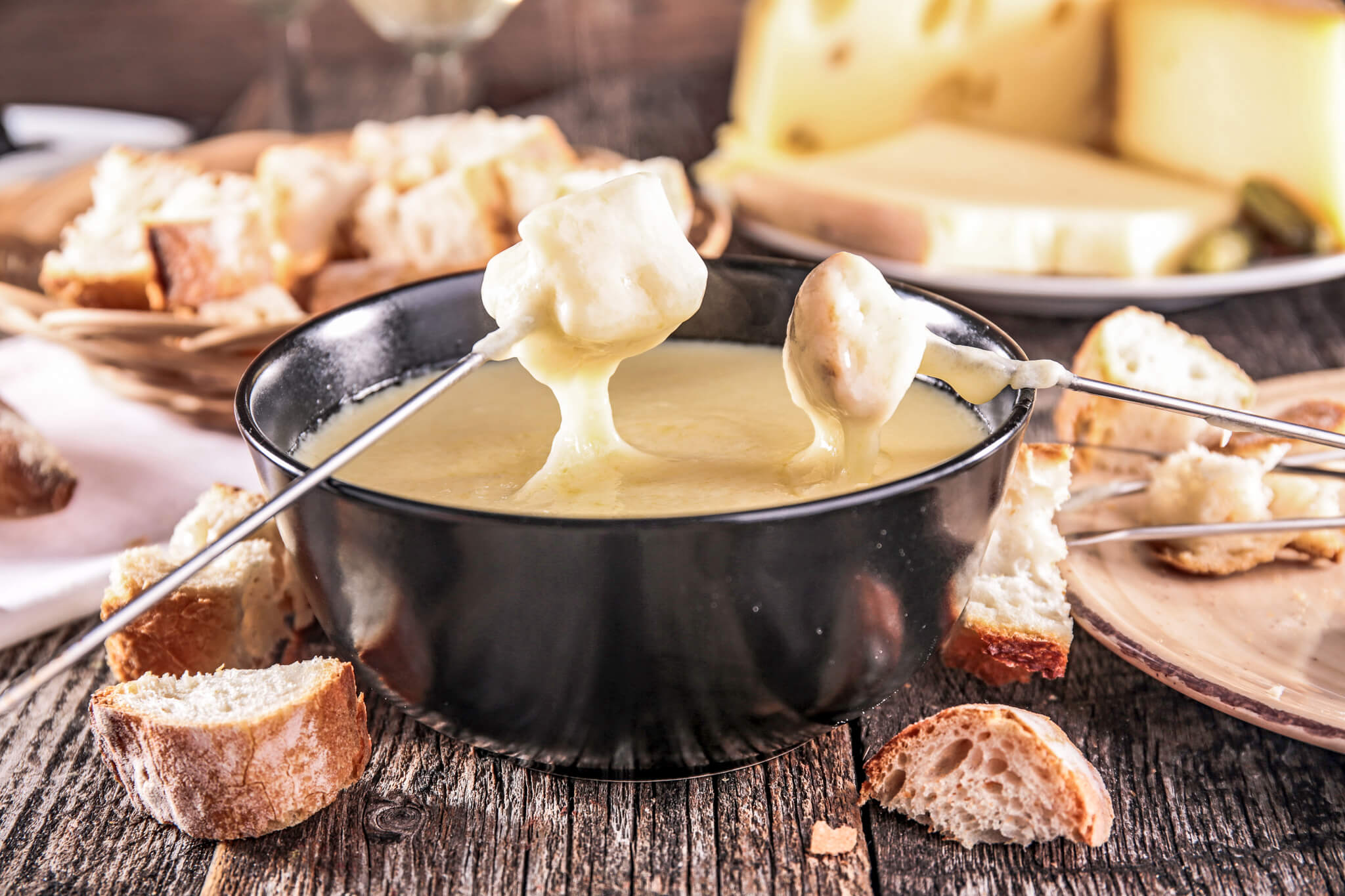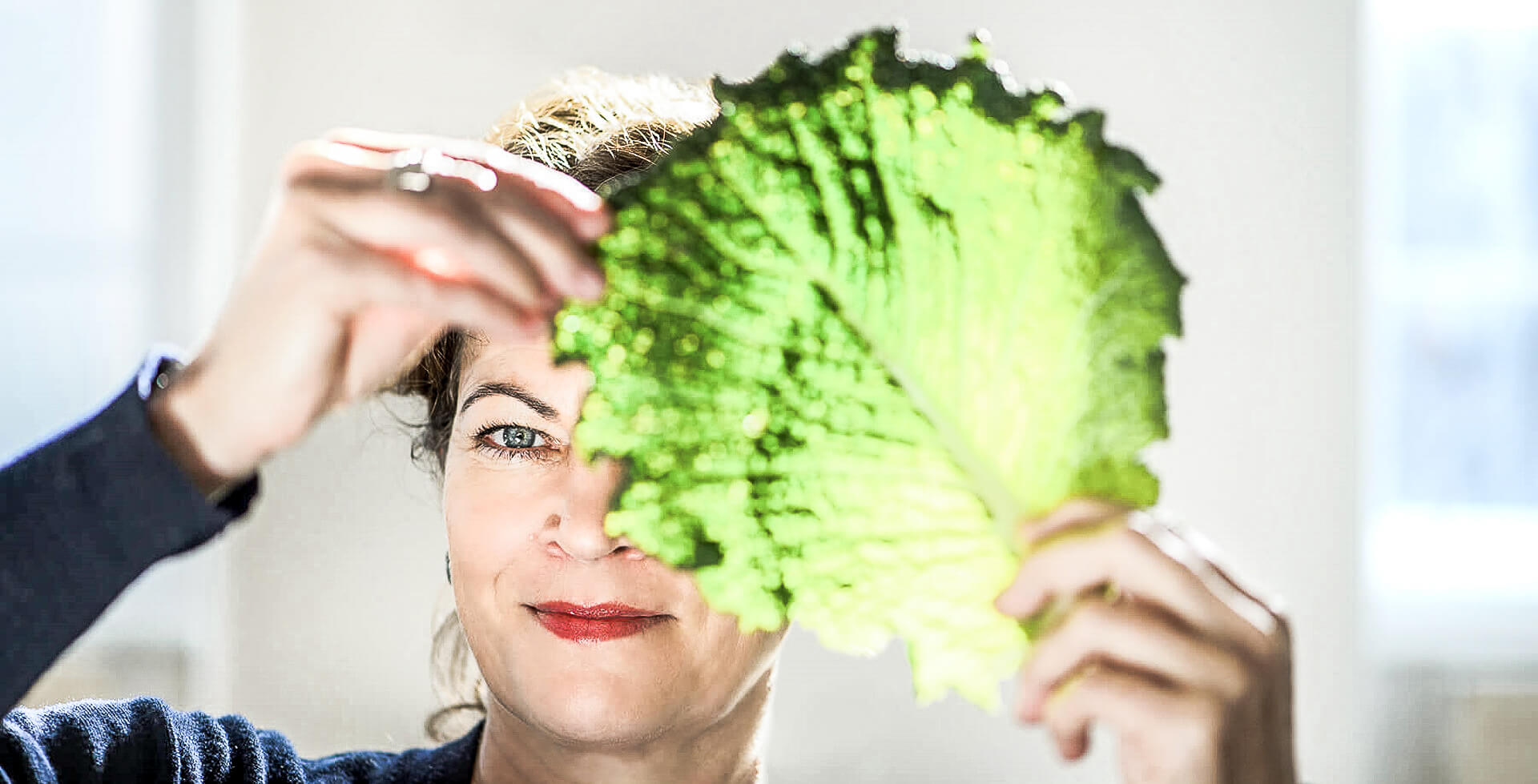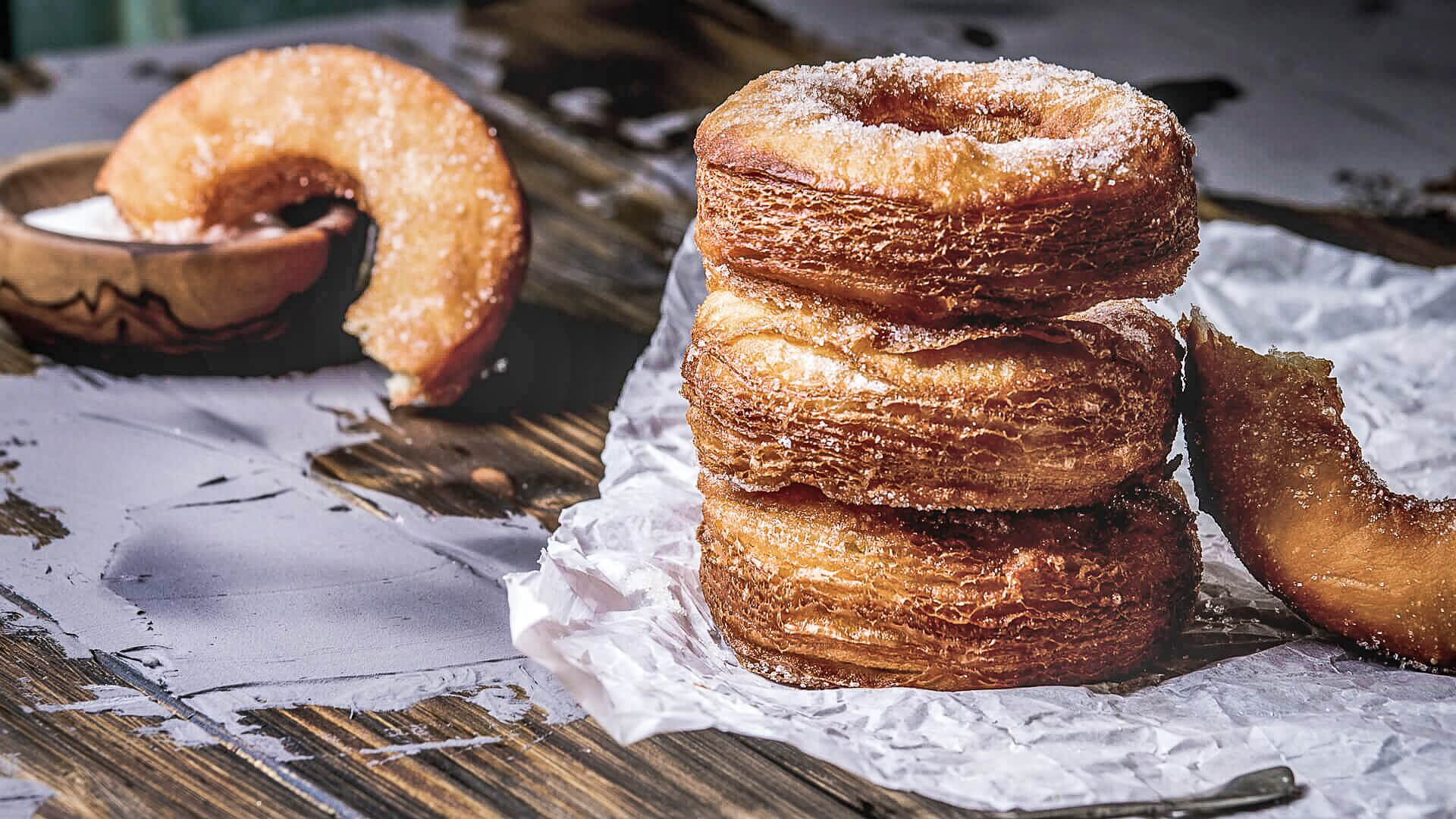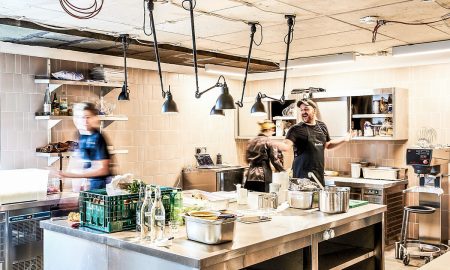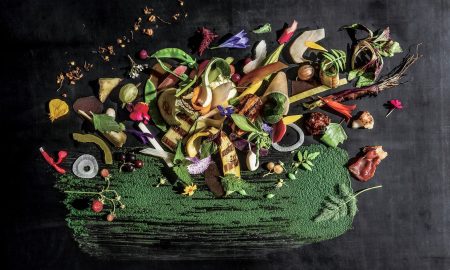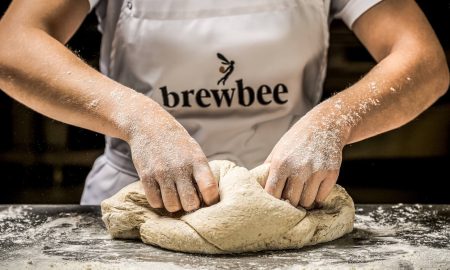How does the cheese turn liquid again?
If you think about it, fondue is the process of returning the cheese, originally made from milk and brought to a solid state through the cheesemaking process, to its original liquid state. However, it’s not all that easy. In cheese production, the casein micelles in the milk are bound by enzymes to form a gel, which is held together by calcium bridges. To achieve a fluid mixture once more, these micelles have to be broken up again.
Sieh dir diesen Beitrag auf Instagram an
The role of salt and alcohol
The chemist has several tools at their disposal for this. For example, mineral salts can be used, which form a good complex with calcium. The calcium therefore omits the bridges with caseins, which regain their freedom. However, this alone is not enough, because the resulting mixture is still very thick, which means that bread cannot be dipped properly.
To reduce viscosity, the volume occupied by each protein must be reduced. This can be done by lowering the pH so that the caseins reach their isoelectric point. Around this point, the proteins are no longer positively or negatively charged and unfold.
A solvent can therefore be added to dilute the cheese. This should be selected so that it has a high affinity with casein. The casein protects itself by folding even more onto itself, which further reduces the thickness of the fondue. An ideal candidate for this is alcohol between 10 and 15%.
The chemist meets the gourmet
The chemist is therefore rushing to his chemicals cabinet to find the necessary powders and solvents. The gourmet, on the other hand, gets a 13% alcohol solution from their cellar with an ideal pH value of around 3.5 and rich in citric, tartaric and malic acid: in other words, a bottle of dry white wine.
They mix the cheese with the wine, which results in a wonderfully delicious emulsion.
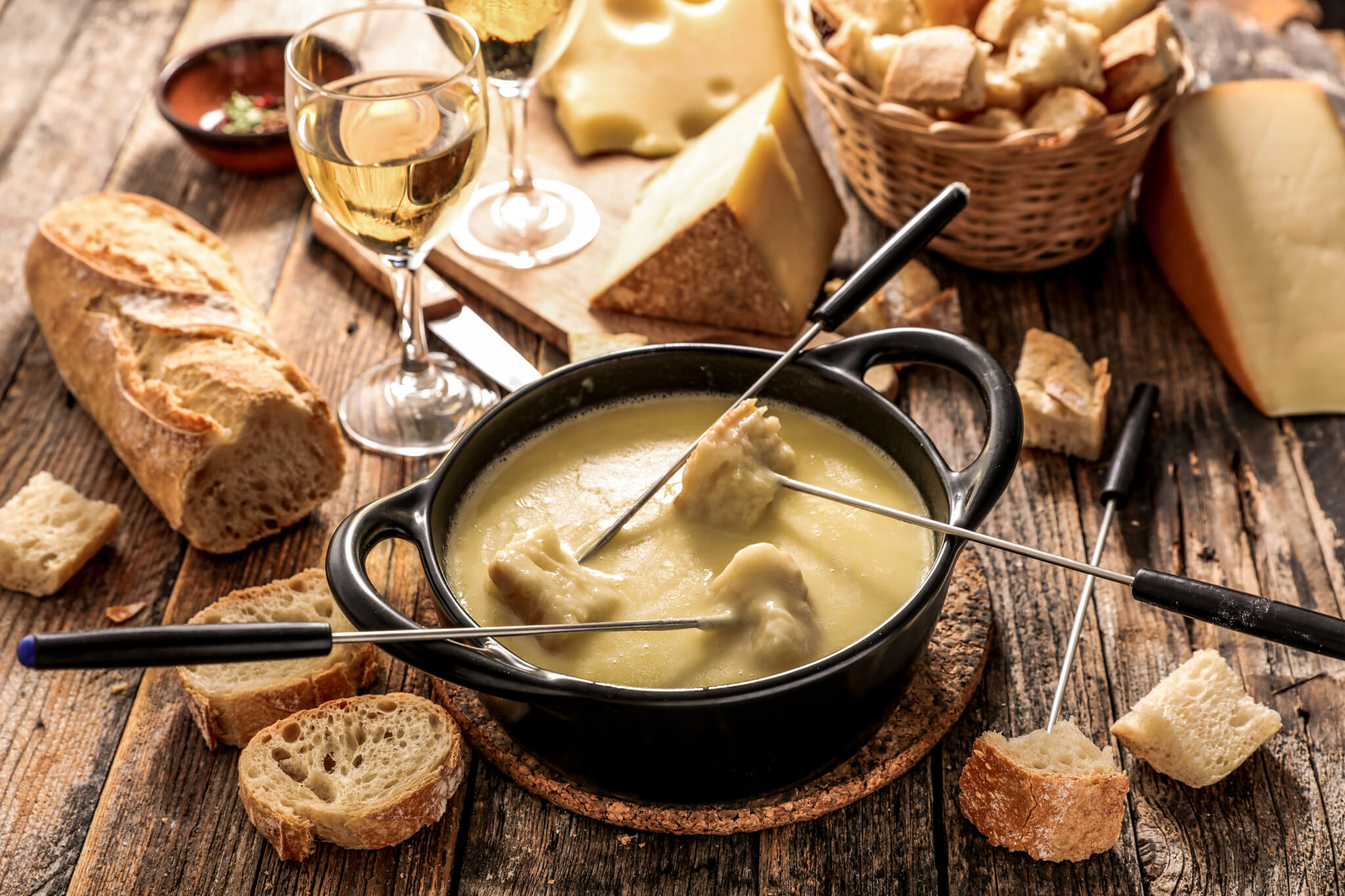
Image: Shutterstock | margouillat photo
This helps if the fondue goes south.
Both cheese and wine are natural products and it is not always easy to emulsify them properly. When the cheese has matured sufficiently, the casein micelles are small and the emulsion has a good chance of success. If not, a team from ETH Zurich has shown that adding three percent by weight of starch is enough to stabilize the emulsion. By expanding with water, the starch blocks the fat molecules at a distance, preventing multiple phases from forming.
Water or cherry brandy?
Fondue is not always easy to digest, so many reach for a bit of digestive liquor. But does it really help the way the name promises? Here too, a team of Swiss researchers provide the answer. They compared the effects of water, tea, wine and schnapps for helping digest fondue. Perhaps surprisingly, the stomachs of water and tea drinkers emptied much faster than those who preferred to drink alcohol with fondue.
Well then: Get started with your fondue pots and have fun trying them out!
Thank you to Dr Grégory Schmauch and the Cooking Research team for giving us an exciting insight into this topic.


